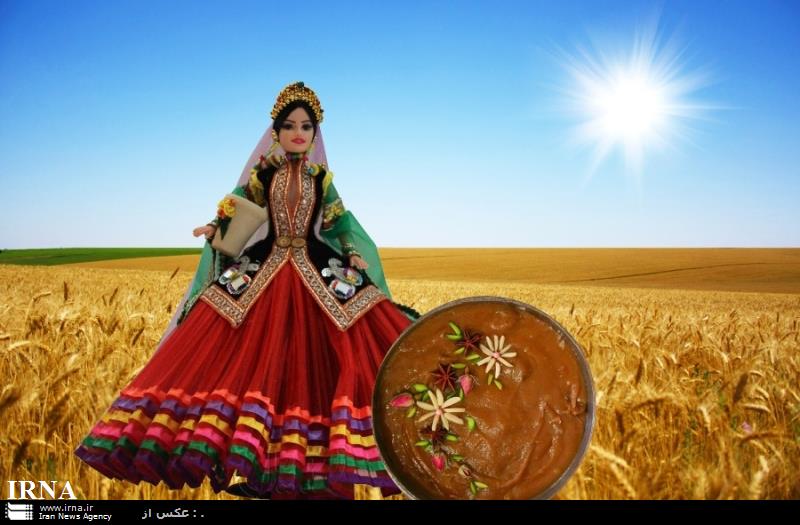
All Iranians in such occasion prepared a very special table named Haft Seen, an arrangement of seven symbolic items traditionally displayed at Norouz, the Iranian New Year.
The Haft-Seen table includes seven items all starting with the letter (S) in the Persian alphabet representing various aspects of Iranian culture.
Haft-Seen items are: Sabzeh – wheat, barley, mung bean or lentil sprouts growing in a dish, representing rebirth, Samanu – sweet pudding made from wheat germ, representing wealth and abundance, Senjed – dried Persian olive, representing love, Seer – garlic, representing medicine and good health, Seeb – apple, representing beauty and vitality, Somāq – sumac, representing sunrise, or light overcoming dark,Serkeh – vinegar representing age and patience.
One out of these seven ingredients is Samanu which is a sweet paste made entirely from germinated wheat in a large pot.
Samanu Glin, is a special type of such sweet paste cooked in Hamadan province, west of Iran.
Women wear colorful clothes and put big pots on oven to prepare such sweet paste before declaration of the New Year.
It takes some 24 hours to cook the meal and women work round the clock and non-stop to get the job done.
Young girls sing songs while other neighbors manage to cook the dish.
They prepare a very special tray decorated with holy Quran, a jar of water, a mirror, a candle, chocolates, comb with a red cloth placing Samanu Glin in the middle of the tray.
After Morning Prayer, they take the door of the pot and those having any request from God stretch their hands towards sky and pray to Almighty to give them what they had demanded.
1430**2050
Follow us on Twitter @IrnaEnglish
 solhkhabar | Peace International News Agency Peace International News Agency , Peace News , International Agency News of Peace
solhkhabar | Peace International News Agency Peace International News Agency , Peace News , International Agency News of Peace